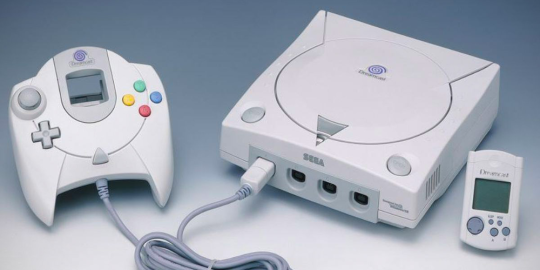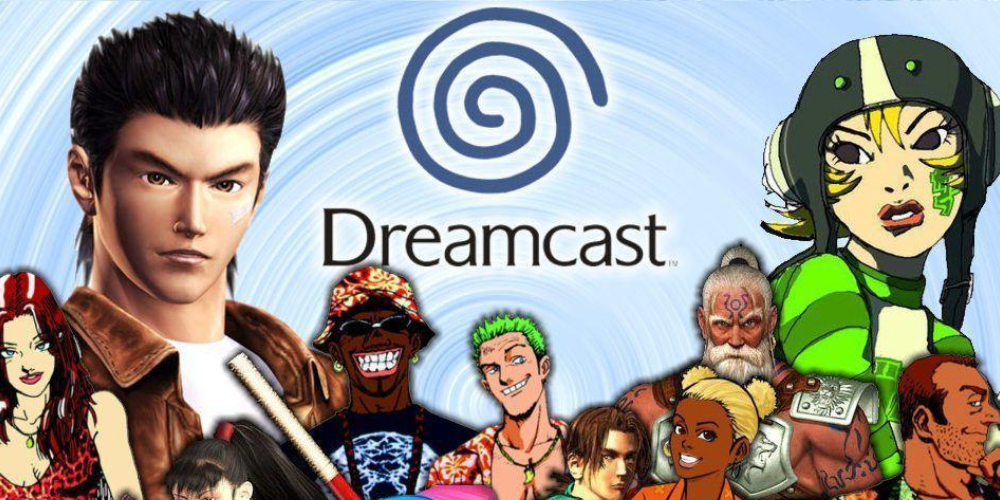
The Birth of a Legend
In the closing moments of the 20th century, during a time characterized by remarkable breakthroughs in technology and a marketplace brimming with formidable rivals, Sega stepped forward to unveil what would be remembered as one of the pivotal, albeit undervalued, gaming systems ever created—the Sega Dreamcast. This groundbreaking console emerged at a juncture where expectations were soaring sky-high for next-generation gaming experiences.
Boasting state-of-the-art graphics that rendered virtual worlds with unprecedented clarity and detail, the Dreamcast offered visuals that were nothing short of revolutionary for its time. It didn't just stop there; the system came fully equipped with pioneering online capabilities long before such features became standard in the industry, allowing players to connect across vast distances and engage in digital multiplayer battles or collaborative play like never before.
Technological Marvel of Its Time
The Dreamcast introduced several revolutionary features for home consoles, marking a significant milestone in the evolution of gaming technology. Notably, it was the first console to boast a built-in modem designed specifically for internet support and online play—an innovative step that set it apart from its contemporaries. This forward-thinking approach not only expanded the boundaries of home gaming but also laid the essential groundwork for subsequent generations of consoles, which have since made online gaming a standard and expected feature. By enabling players to connect with others around the globe seamlessly, the Dreamcast anticipated a future where digital multiplayer interactions became integral to the gaming experience.
Game Library - The Heart of Innovation

Not only did the Dreamcast offer advanced hardware specs, but it also had a library bursting with unique and creative titles. The console was a trailblazer in its era, setting new standards for gaming experiences that captivated players around the world. Games like "Sonic Adventure," "Shenmue," and "Jet Set Radio" were not just visually stunning—they were groundbreaking in how they expanded the possibilities of what video games could be.
"Sonic Adventure" brought the iconic blue hedgehog into fully realized 3D worlds, offering fast-paced gameplay combined with vibrant visuals and a memorable soundtrack. Meanwhile, "Shenmue" introduced an unprecedented level of realism and depth with its open-world environments, intricate storylines, and detailed character interactions that made players feel as though they were part of a living, breathing world. Then there was "Jet Set Radio," which fused stylish graffiti art with innovative mechanics and an unforgettable soundtrack to create an eclectic experience that stood out from anything else available at the time.
Legacy Hindered by External Challenges
Despite these significant advancements in gaming technology and innovation, several external factors ultimately hindered the widespread success of Sega's Dreamcast console. One of the most notable challenges came from the timing of Sony's PlayStation 2 announcement. Even before the PlayStation 2 hit store shelves, its impending release generated a wave of anticipation and excitement that overshadowed the Dreamcast, creating an intensely competitive market environment. Consumers eager for cutting-edge technology began to hold off on purchasing new consoles, waiting instead for Sony's latest offering.
Ripple Effects in Modern Consoles

While the Dreamcast's life span was relatively brief, with production ceasing in 2001, its legacy continues to echo through the gaming world. This console was a trailblazer in many respects, heralding innovations that would eventually become standard features in subsequent generations of gaming systems. One of the most groundbreaking aspects of the Dreamcast was its pioneering approach to online gaming.
It laid the groundwork for community-driven platforms like Xbox Live, which built on Sega's early foray into connecting gamers across the globe. Additionally, the Dreamcast ventured into motion-sensing technology with accessories such as Sega's fishing rod controller, which prefigured later advancements by companies like Nintendo with their Wii Remote. These elements underscore the visionary impact of the Dreamcast on modern gaming—an influence so profound that many of today's amenities and functionalities are direct descendants of its forward-thinking design choices. As a result, even though it had a short run on the market, the Dreamcast has secured its place as a seminal influence in video game history, shaping experiences and expectations that we now take for granted.
Cult Following and Recent Surge
In retirement, the Dreamcast console has acquired a loving cult following among gamers who recognize its numerous and often pioneering contributions to the gaming industry. This affection is not mere nostalgia; it's a deep appreciation for a system that was ahead of its time in many ways. Fan-made servers have impressively kept some beloved multiplayer games alive years after official support from developers ended, showcasing the community's dedication to preserving the console's legacy.
Furthermore, a significant surge in retro gaming popularity has breathed new life into Dreamcast systems, bringing them back into living rooms around the world as new generations discover this underappreciated gem. The charm of playing on original hardware, coupled with the unique game library that includes both universally acclaimed titles as well as hidden treasures, offers an authentic and enchanting trip through video gaming history.
Additionally, content creators and influencers have helped amplify this resurgence by sharing their own nostalgic memories and gameplay experiences on platforms like YouTube and Twitch, further spreading awareness and appreciation. All these factors combined contribute to revitalizing interest in the Dreamcast, ensuring its influence endures in the hearts and minds of old fans while capturing the curiosity and admiration of new enthusiasts.
In summary
The Sega Dreamcast will forever be known as one of the unsung pioneers in the videogame industry. Despite facing formidable challenges that ultimately led to its premature demise, it introduced groundbreaking innovations that deeply influenced how we interact with digital entertainment today. When it was initially released, it boasted impressive hardware capabilities and forward-thinking features that were revolutionary for its time. These included online gaming support through its built-in modem and a versatile library of games that showcased an unprecedented level of creativity and technical prowess. The system's VMU (Visual Memory Unit) also introduced a novel form of interaction, serving as both a memory card and a secondary screen for various in-game functions.
Although the Dreamcast never achieved commercial dominance or widespread acceptance during its active years, retrospection reveals just how truly ahead of its time it was—both in terms of technology and as an architect for modern-day gaming vernaculars still celebrated decades later. Its influence can be seen in the evolving landscape of online multiplayer games, downloadable content, and even innovative game design approaches popular today.
Titles like "Shenmue" and "Jet Set Radio" pushed the boundaries of what was possible in interactive storytelling and visual style, laying the foundations upon which subsequent games were built. Even in failure, the Dreamcast left an indelible mark on the gaming world, proving that risk-taking and innovation are paramount to driving the industry forward.